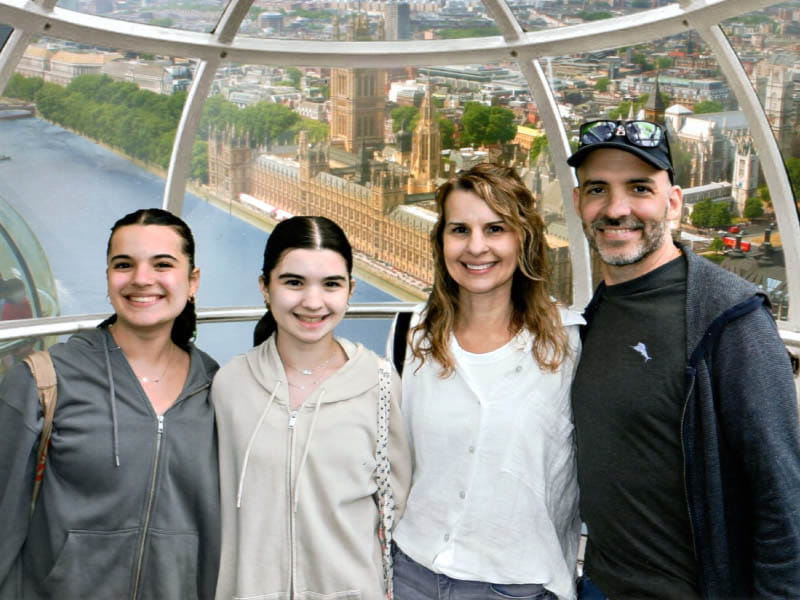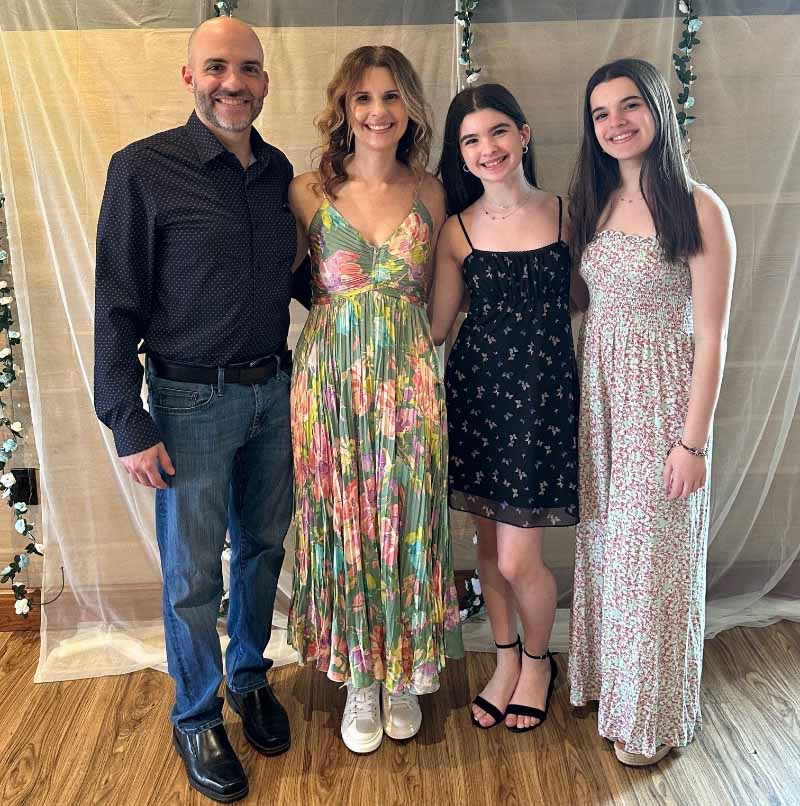After working out, he went into cardiac arrest. His wife saved him with CPR.
By Deborah Lynn Blumberg, American Heart Association News

Luis and Beth Padron spent a chilly Sunday morning in January strength training in their Monroe, New Jersey, home. Afterward, Beth stretched while Luis went to shower. The rest of the day, they had errands to run. Beth was going to cook a nice family dinner.
As Beth cooled down, she heard a thud from upstairs. It sounded like something hit the roof. Her daughter, Eliana, who was 15, was beside her. Beth yelled out to her other daughter, Rebecca, then 17. She was upstairs studying and was OK.
"Let's just check on Daddy," Beth said to Eliana. Beth yelled for Luis to see if he was OK.
Upstairs, she knocked on the locked bathroom door. Luis, her husband of 19 years, didn't respond.
Beth knocked harder. Nothing.
She reached up and grabbed the key they kept on the door frame.
Opening it, she found Luis crumpled on the floor.
"Call 911!" Beth screamed to her daughters.
Eliana dialed 911. Rebecca spoke to the dispatcher and gave Beth the phone. Eliana waited outside for EMS.
Meanwhile, Beth dropped to the floor to see if Luis was breathing. He wasn't.
Beth had taken a CPR class a decade earlier. Recently, she'd read an article about how providing immediate chest compressions can improve a person's chance of survival from cardiac arrest. With coaching from the 911 operator, she started pumping on his chest. Although she felt his ribs break, Beth kept going.
As she performed CPR on Luis, his face had drained of color. Within minutes, paramedics arrived. For 30 minutes, they shocked him multiple times with an automated external defibrillator, or AED, and gave him epinephrine to help restart his heart.
Beth and the girls huddled together downstairs.
Then, there was a commotion on the stairs.
"We got his heart beating again," a paramedic called out.
Beth rode in the ambulance with Luis to Robert Wood Johnson University Hospital a few miles away in New Brunswick. Her mom drove the girls to meet them.
Paramedics put a tube in Luis' throat to help him breathe. In the hospital, doctors rushed him to the cardiac catheterization lab to look for any blockages in his arteries. He had an electrocardiogram to measure the electrical activity of his heartbeat. All tests were fine.
To help reduce permanent brain damage, doctors decided to try a treatment called therapeutic hypothermia. It's when a person's body temperature is lowered after cardiac arrest.
For two days, Luis shivered and shook. Beth held his hand. Rebecca and Eliana played "Don't Stop Believin'" by Journey, one of his favorite songs.
Two days after his cardiac arrest, Luis opened his eyes. Doctors removed his breathing tube. He was still groggy from being sedated.
"My beautiful wife," he said to Beth, his voice quiet and scratchy.
"You're OK," she said, tearing up. "You're safe."
Physically, Luis was OK. But he couldn't remember the year or nurses' names. He told Beth and the girls he had a bad cold, even though they'd told him he had a cardiac arrest.
Slowly, his short-term memory improved. He and Beth discussed the option of him getting an ICD, an implantable cardioverter defibrillator. If the device detects an abnormal heart rhythm, it will deliver an electric shock to restore a normal heartbeat.
The next day, Luis seemed to remember their conversation.
He got the ICD and had genetic testing. Results didn't help explain why he'd gone into cardiac arrest at age 50. He never learned why.
Nine days after Luis collapsed, he went home. He spent the next two weeks recovering. By the time Luis returned to his job as a software engineer in late February, his short-term memory had returned to normal.
Now, Luis often thinks about how he wouldn't be alive if it weren't for his wife's quick action. The Padrons are planning a CPR training session for their extended family.
"I always envisioned if I needed to use CPR, it would be some random person in the street," Beth said. "Not in my house and not my husband. From the minute we arrived at the hospital, everyone told me I saved his life. Everyone needs to learn CPR."

At the same time, Beth has sought treatment for post-traumatic stress disorder.
"The trauma really is with the person who did the work and helped," Luis said.
After they came home from the hospital, Beth found herself crying when she went into the upstairs bathroom. She pictured Luis lying motionless on the floor.
"Usually your house is your safe space," Beth said. "It became my place of trauma."
To help make the bathroom a positive space again, Luis sat with her while she brushed her teeth and washed her face. They put a coat of taupe paint on the white walls.
Gradually, Beth began to feel less anxious. "Taking control of your environment really does make a difference," she said.
Practicing gratitude helped as well. The Padrons feel grateful for the first responders, doctors, nurses and hospital staff who cared for Luis. They also have a new appreciation for every day they have together as a family. And Luis' ICD gives them a sense of reassurance that the device could save his life.
"It's there if I ever need it," Luis said.
Stories From the Heart chronicles the inspiring journeys of heart disease and stroke survivors, caregivers and advocates.





